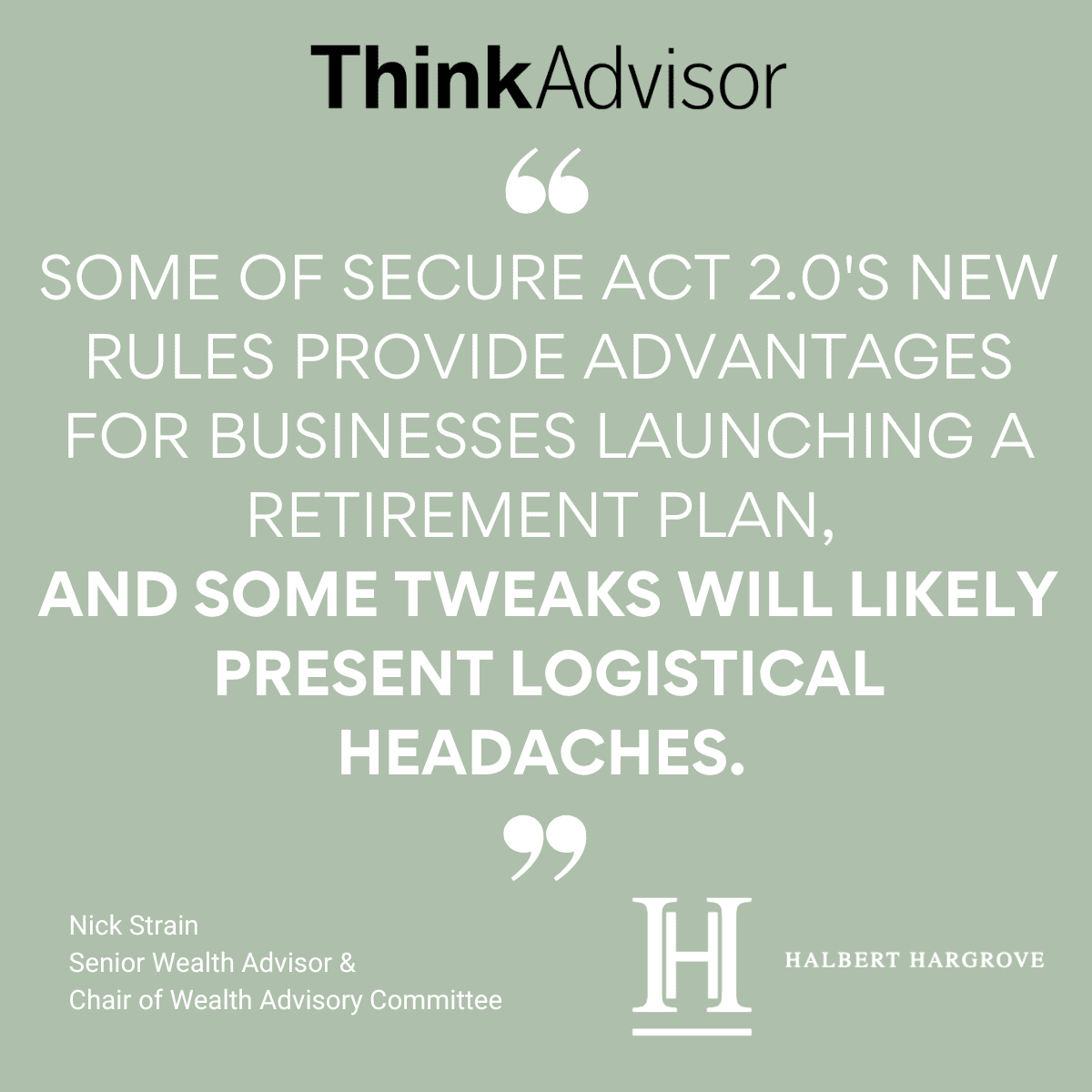As a small-business owner, there are new rules, and tax breaks, you should be aware of.
By Nick Strain, CFP®, CPWA®, AIF®, Senior Wealth Advisor at Halbert Hargrove as featured in ThinkAdvisor
At year’s end, the Setting Every Community Up for Retirement Enhancement (Secure) 2.0 Act was passed and signed into law, with significant changes to retirement plan rules.
Secure Act 2.0 has an incredible 92 different provisions. The main purpose of this law is to
increase employee participation in companies’ retirement plans. It provides incentives to small businesses to create retirement plans and makes automatic enrollment the default for newly hired employees in 2025 (older plans are exempt, which I’ll discuss below). There’s also an automatic contribution escalation feature that would increase an employee’s contribution amount by 1% per year.
Some of these rules provide advantages for businesses launching a retirement plan, and some tweaks will likely present logistical headaches. There are staggered start dates for different provisions, and the below provides an overview of eight of the most impactful changes, in order of their effective dates.
Secure 2.0 Provisions Effective in 2023
1. Tax credits for small businesses to start a retirement plan. online pharmacy buy oseltamivir no prescription with best prices today in the USA
The act provides for a tax credit for companies with 50 or fewer employees for 100% of the startup and annual administration retirement plan costs for the first three years of a plan, up to a maximum of $5,000 a year.
Tax credits can be received for employer contributions that go toward employees.
These will match up to $1,000 per employee for employer contributions; they apply only to employees who make less than $100,000. These tax credits are available for the first five years of a new plan.
2. Support for small financial incentives to employees for contributing to a retirement plan. buy aricept online bondchc.com/images/banners/jpg/aricept.html no prescription pharmacy
The act now allows for “de minimis” financial incentives to employees who contribute to the retirement plan. For example, an employer can incentivize new employees to sign up and start contributing to their retirement plans with a gift card.
3. Increased qualified longevity annuity contract (QLAC) maximum.
Current rules allow for up to 25% of a participant’s retirement plan balance, or a maximum of 5,000, to go toward purchasing a qualified longevity annuity contract.
The new rule allows for up to $200,000 to be invested in a QLAC.
QLACs are very interesting and probably underutilized as retirement vehicles. You buy into a QLAC with a single premium (for example, a 0,000 purchase), then you decide when you want the deferred annuity to start.
The longer you wait, the higher the annual annuity amount you will receive, with a maximum deferral age of 85.


